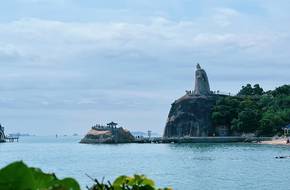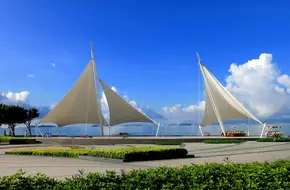Location
Xiamen, often called “Amoy,” is a coastal city in southeastern China’s Fujian Province. It sits on the west side of the Taiwan Strait, facing Kinmen Island (part of Taiwan) just a short ferry ride away. Known as the “Egret Island” due to its history as a habitat for white egrets, Xiamen includes the main island, smaller surrounding islands like Gulangyu (a UNESCO World Heritage Site), and parts of the mainland. Its mild, subtropical climate makes it a year-round destination, with warm winters and breezy summers.
Getting There
Xiamen is well-connected globally:
- By Air: Xiamen Gaoqi International Airport (XMN) offers flights to over 100 cities worldwide, including Singapore, Tokyo, and Amsterdam. Direct shuttles to downtown take 30 minutes.
- By Train: High-speed trains link Xiamen to Shanghai (6 hours), Shenzhen (3 hours), and Fuzhou (2 hours). The Xiamen North Railway Station is a major hub.
- Local Transport: The metro system (6 lines as of 2024) covers key areas. Buses and taxis are affordable, while the unique Bus Rapid Transit (BRT) system uses elevated roads to avoid traffic. Ferries to Gulangyu Island run every 15 minutes from downtown.
Natural Beauty
Xiamen blends urban life with coastal charm:
- Gulangyu Island: A car-free UNESCO site with colonial architecture, lush gardens, and beaches. Hike to Sunlight Rock for panoramic views or explore the Piano Museum, reflecting its musical heritage.
- Xiamen Botanical Garden: Wander through cactus gardens and misty rainforest zones. The park’s mountain trails offer skyline views.
- Hulishan Fortress: A seaside historical site with cannons and cliffside paths overlooking the Taiwan Strait.
- Yundang Lake: A serene urban lake surrounded by parks and cafes, perfect for evening strolls.
Culture & History
Xiamen’s rich heritage spans centuries:
- Nanputuo Temple: A 1,000-year-old Buddhist temple near Xiamen University, featuring intricate carvings and peaceful courtyards.
- Zhongshan Road: A pedestrian street with restored colonial-era buildings, blending shopping and history. Try local snacks like peanut soup or oyster omelets.
- Shapowei Art Zone: A trendy area where fishing docks meet hipster cafes and street art. Don’t miss live music at local bars.
- Kulangsu History Museum: Learn about Gulangyu’s past as an international settlement and its role in China’s tea trade.
Food & Shopping
Xiamen is a paradise for foodies and shoppers:
- Local Dishes: Savor shacha noodles (peanut-based broth), oyster pancakes, and taro dumplings. Visit the bustling 8th Market for fresh seafood and street food.
- Tea Culture: Fujian is famous for its oolong tea. Join a tea-tasting session in a traditional minnan-style house.
- Shopping: Buy souvenirs like handmade puppets or lacquerware on Gulangyu. For modern malls, head to SM Lifestyle Center.
Modern Conveniences
Traveler-friendly amenities abound:
- Accommodation: Options range from luxury hotels (The Langham, Xiamen) to budget hostels. Many guesthouses on Gulangyu offer historic charm.
- Language: Major attractions have English signs. Younger locals often speak basic English.
- Visa Policies: Xiamen offers a 144-hour visa-free transit for international travelers arriving via its airport, ferry terminals, or cruise ports.
Unique Experiences
Dive into Xiamen’s laid-back vibe:
- Bike the Island Ring Road: Rent a bike to explore coastal paths with views of Kinmen Island and fishing villages.
- Sunset Cruise on the Taiwan Strait: Watch the sky turn pink over the sea.
- Taiwanese Snack Street: Sample authentic Taiwanese treats like bubble tea and braised pork rice near the ferry terminal.
Beyond Xiamen
Use the city as a gateway to explore more:
- Fujian Tulou: Day-trip to these UNESCO-listed Hakka earth buildings (2.5 hours by car).
- Quanzhou: Visit this ancient maritime Silk Road hub (1.5 hours by train).
- Kinmen Island: Take a ferry to this Taiwanese island for historic sites and local wines.




